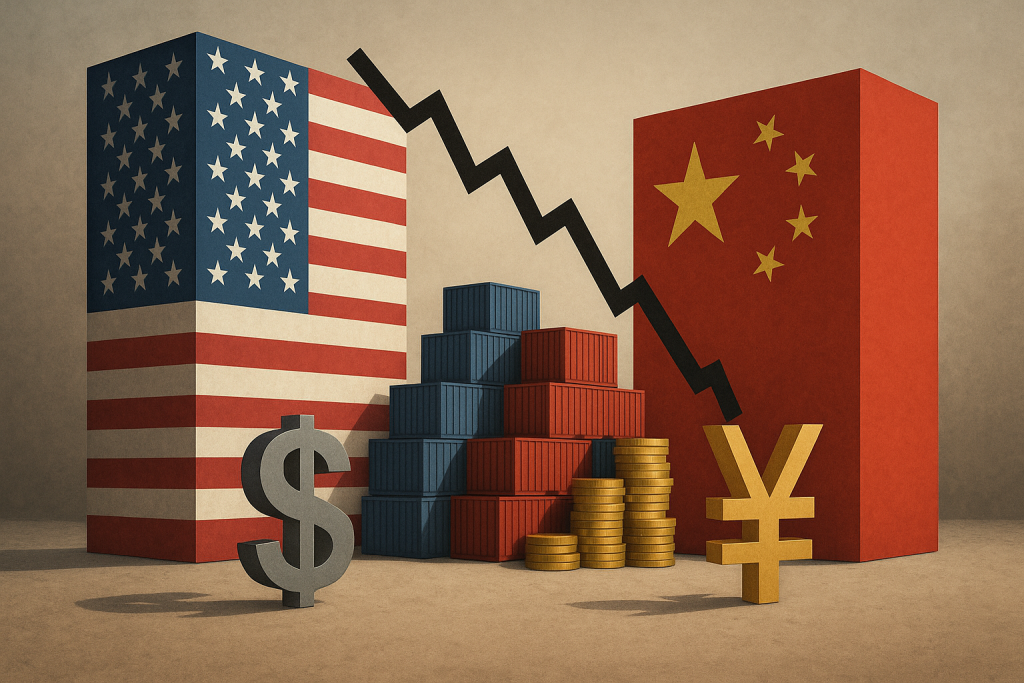In the complex arena of global trade, tariff wars represent one of the most disruptive weapons in a country’s economic arsenal. These conflicts occur when nations impose import taxes or tariffs on each other’s goods, usually as a retaliatory measure, in an attempt to protect domestic industries or coerce policy changes. While they may appear to benefit the imposing country in the short term, the long-term consequences are often far-reaching and deeply felt across various sectors and economies. A prominent and instructive example is the recent tariff war between the United States and China, which has reshaped trade patterns, rattled financial markets, and prompted global economic uncertainty.
The Roots of the U.S.-China Tariff War
The U.S.-China tariff conflict, which began in 2018 under President Donald Trump, was framed around addressing trade imbalances and curbing alleged unfair Chinese practices, such as intellectual property theft and forced technology transfers. The U.S. initiated the first volley by slapping tariffs on $34 billion worth of Chinese goods, ranging from electronics to machinery. China responded in kind, targeting American agricultural products such as soybeans and pork—industries central to the U.S. Midwest.
This tit-for-tat escalation continued over the next two years, eventually affecting hundreds of billions of dollars in goods. The United States placed tariffs on over $360 billion of Chinese imports, while China hit approximately $110 billion worth of U.S. products. These measures significantly disrupted the global supply chain and forced companies to rethink sourcing strategies and manufacturing hubs.
Winners: Some Industries, Some Nations
Though tariff wars generally introduce market instability, they can create short-term winners under specific circumstances. In the U.S., domestic steel and aluminum manufacturers initially benefited from import restrictions, which shielded them from cheaper foreign competition. Similarly, countries outside the conflict—like Vietnam, Mexico, and Bangladesh—emerged as alternative manufacturing hubs, picking up the slack as companies looked to avoid tariffs by shifting production away from China.
Moreover, some sectors enjoyed increased government subsidies or incentives to cushion the impact of higher costs. In the U.S., for instance, farmers who lost access to Chinese markets were provided with multi-billion-dollar bailout packages to offset losses and maintain political support.
Losers: Consumers, Small Businesses, and Global Stability
Despite isolated gains, the broader effects of tariff wars are often negative. Consumers in both countries bear the brunt of higher prices as import taxes raise the cost of goods ranging from electronics to clothing. U.S. retailers and small businesses, in particular, struggled to absorb these costs or pass them on to customers, resulting in reduced profit margins and, in some cases, business closures.
China, on its end, saw a slowdown in exports to the U.S., leading to weakened industrial output and rising unemployment in certain sectors. The ripple effects were also felt globally—stock markets experienced volatility, global growth forecasts were downgraded, and investment flows were curtailed due to increased uncertainty.
Perhaps more damaging in the long run is the erosion of trust in global trade norms. The World Trade Organization (WTO) was sidelined during this confrontation, with disputes being handled unilaterally or bilaterally instead. This shift undermined the rules-based order that has governed international commerce for decades, setting a dangerous precedent for future disputes.
Lessons for the Future
The U.S.-China tariff war highlights the high cost of economic nationalism and the complexity of modern supply chains. While governments may seek to protect certain industries or address legitimate grievances, tariff wars rarely yield clear or lasting victories. They often provoke retaliation, strain diplomatic relations, and generate uncertainty that hurts more than it helps.
As the global economy becomes increasingly interconnected, multilateral dialogue and coordinated reform efforts are more effective tools than unilateral tariffs. Addressing trade imbalances, intellectual property concerns, and fair competition practices requires cooperation rather than confrontation. If anything, the recent conflict between the U.S. and China underscores the need for a more balanced and forward-looking approach to international trade.






